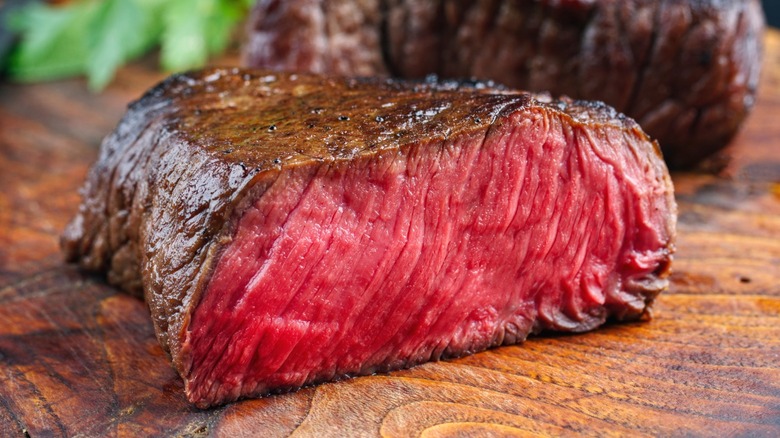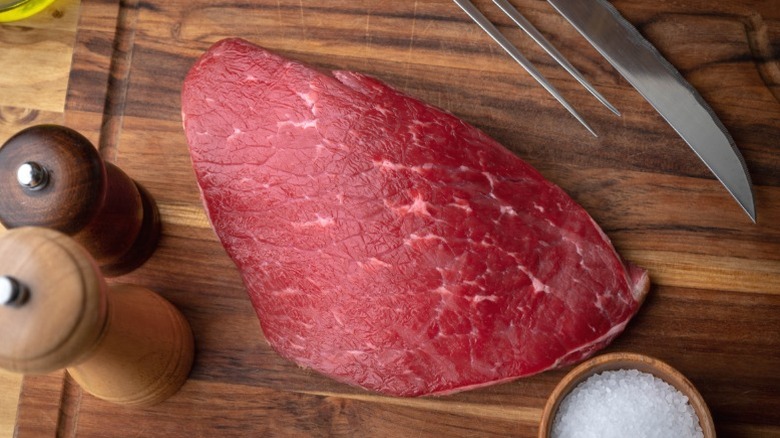What Does It Actually Mean To Cut Meat Against The Grain?
When someone is said to "go against the grain," it usually means that they've done something unexpected, or that conventional wisdom suggests is unwise. But when it comes to cutting meat, going against the grain is exactly what you're supposed to do. By cutting against the grain of a piece of meat, you make it significantly easier to chew. This results in a much more pleasant dining experience than you would get if you cut with the grain.
So what, exactly, is the grain? Well, it's just another term for the patterns of long muscle fibers running through a cut of meat. On tender cuts of meat like the loin, the grain can be very fine and difficult to see. That's because tender cuts come from parts of the animal's body that didn't get much exercise, meaning they stay nice and soft. You can cut these pieces of meat any way you like.
But if you're faced with something tougher like flank steak, cutting with the grain — that is, in the same direction as the muscle fibers — will give you a particularly flavorful mouthful of rubber. Even though flank or skirt can be some of the best cuts of steak for grilling, it's essential to cut them the opposite way — against the grain — if you want a tender bite. And if you follow a few tips, it's not hard to do.
Cut against the grain to shorten the muscle fibers
If you want to eat and enjoy tougher cuts of steak, you're going to have to slice through those muscle fibers somehow. You can either cut through them with your knife, which won't take much time or effort, or you can bite through them with your teeth, which will take a lot of time and effort. The choice is yours — but we know which option we prefer. You can call it an easy way to tenderize meat, if you want. But before you start to slice, pay attention to the grain, and the angle you'll need your steak and the knife.
It's easier to identify the grain when the meat is raw than it is on a perfectly seared steak which has browned and developed a crust. So take a look for the lines that run through it, noticing which direction they're going in, before you start cooking. Then once your beef is cooked and the steak has been properly rested, make sure you slice it across the grain rather than in the same direction.
You want to go perpendicular, rather than parallel, so just rotate the meat if necessary to help you cut across the grain. This will shorten the muscle fibers, and make the meat easier to chew. As a result, the steak will also seem a lot more tender, especially if you slice it thinly rather than in thick pieces.

